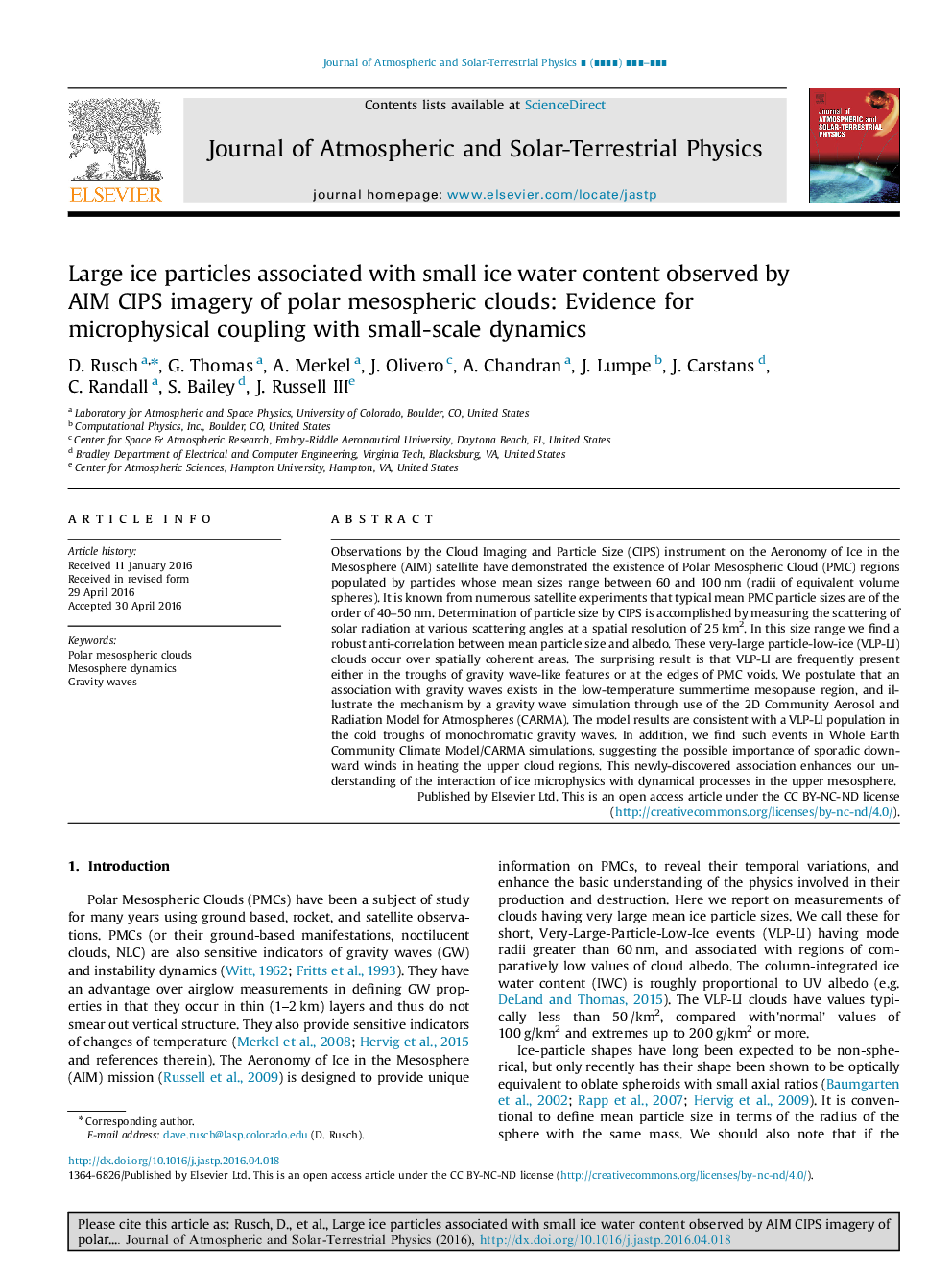| Article ID | Journal | Published Year | Pages | File Type |
|---|---|---|---|---|
| 5487568 | Journal of Atmospheric and Solar-Terrestrial Physics | 2017 | 9 Pages |
Abstract
Observations by the Cloud Imaging and Particle Size (CIPS) instrument on the Aeronomy of Ice in the Mesosphere (AIM) satellite have demonstrated the existence of Polar Mesospheric Cloud (PMC) regions populated by particles whose mean sizes range between 60 and 100Â nm (radii of equivalent volume spheres). It is known from numerous satellite experiments that typical mean PMC particle sizes are of the order of 40-50Â nm. Determination of particle size by CIPS is accomplished by measuring the scattering of solar radiation at various scattering angles at a spatial resolution of 25Â km2. In this size range we find a robust anti-correlation between mean particle size and albedo. These very-large particle-low-ice (VLP-LI) clouds occur over spatially coherent areas. The surprising result is that VLP-LI are frequently present either in the troughs of gravity wave-like features or at the edges of PMC voids. We postulate that an association with gravity waves exists in the low-temperature summertime mesopause region, and illustrate the mechanism by a gravity wave simulation through use of the 2D Community Aerosol and Radiation Model for Atmospheres (CARMA). The model results are consistent with a VLP-LI population in the cold troughs of monochromatic gravity waves. In addition, we find such events in Whole Earth Community Climate Model/CARMA simulations, suggesting the possible importance of sporadic downward winds in heating the upper cloud regions. This newly-discovered association enhances our understanding of the interaction of ice microphysics with dynamical processes in the upper mesosphere.
Related Topics
Physical Sciences and Engineering
Earth and Planetary Sciences
Geophysics
Authors
D. Rusch, G. Thomas, A. Merkel, J. Olivero, A. Chandran, J. Lumpe, J. Carstans, C. Randall, S. Bailey, J. III,
